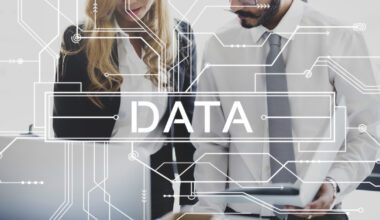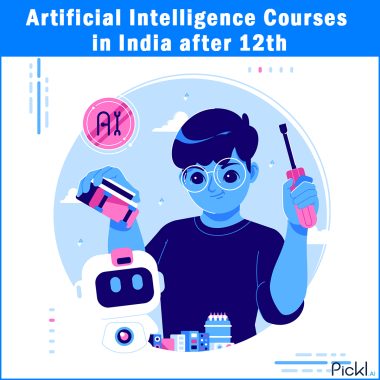Summary: Big Data provides the raw materials Artificial Intelligence the processing power. This dynamic duo is revolutionizing fields from healthcare to finance. Explore how Big Data and AI work together to unlock valuable insights and drive innovation.
Introduction
The growing landscape of technology has transformed the way we live our lives. Around 97.2% of companies say they’re investing in Big Data and Artificial Intelligence. Its impact is not merely limited to the tools and devices we use. Rather, these technologies have seamlessly synchronized with every aspect of our lives.
From voice assistant to automated mail replies to speech recognition, there are myriads of things where we deploy these technologies. Although we talk about AI and Big Data at the same length, there is an underlying difference between the two.
In this blog, our focus will revolve around Big Data and Artificial Intelligence. Both these technologies are significantly transforming our world.
What is Big Data?
As the name highlights, Big Data refers to the large volume of data collected by businesses. These data include an array of information related to customer demographics, preferences and trends in the market. This data is captured through IoT. Big Data is characterized by its three key attributes, known as the Three Vs:
Volume
The sheer magnitude of data that is generated every second is staggering. In 2023, the average data collection per day reached up to 120 zettabytes and is expected to shoot up to 181 zettabytes by 2025. With this enormous storehouse of information, companies must have the right tools to harness and derive useful insights.
Velocity
Data is generated at an unprecedented rate. Social media posts, online transactions, and sensor data are generated in real-time, and businesses need to process this data quickly to gain meaningful insights.
Variety
Data comes in various forms – structured, semi-structured, and unstructured. It includes text, images, videos, and more. This diversity of data makes it challenging to manage and extract valuable information.
The Power of Artificial Intelligence
Artificial Intelligence, on the other hand, represents the capability of machines to mimic human intelligence. It involves the use of algorithms, neural networks, and Machine Learning to enable machines to perform tasks that typically require human intelligence. AI has become a game-changer in various fields, from healthcare and finance to marketing and customer service.
Machine Learning
One of the most crucial aspects of AI is Machine Learning. Machine Learning algorithms enable systems to learn and improve from data without being explicitly programmed. They can identify patterns, make predictions, and adapt to changing circumstances.
Natural Language Processing
AI technologies, like Natural Language Processing (NLP), enable computers to understand, interpret, and generate human language. This has paved the way for chatbots, virtual assistants, and sentiment analysis tools.
Computer Vision
Computer vision, a subset of AI, allows computers to interpret and understand visual information from the world, such as images and videos. It’s widely used in facial recognition, autonomous vehicles, and medical imaging.
The Symbiotic Relationship
Big Data and Artificial Intelligence share a symbiotic relationship, each enhancing the capabilities of the other. Let’s explore how these two forces work together seamlessly:
Data Preprocessing
Before AI can work its magic, data must be pre-processed. Big Data technologies assist in collecting, cleaning, and organizing data, making it ready for AI algorithms. The quality of input data greatly influences the effectiveness of AI models.
Data Analysis
Big Data analytics provides AI with the fuel it needs to function. AI algorithms thrive on large datasets, and Big Data platforms can process vast amounts of information quickly, enabling AI to make more accurate predictions and decisions.
Predictive Analytics
Combining Big Data and Artificial Intelligence leads to powerful predictive analytics. Businesses can use historical data to make predictions about future trends, customer behaviour, and market dynamics. This empowers organizations to make data-driven decisions and gain a competitive edge.
Personalization
One of the most evident outcomes of the Big Data-AI collaboration is personalized experiences. AI algorithms analyze a user’s behaviour and preferences, which are made possible through the collection of vast amounts of data. This results in personalized product recommendations, content, and services, enhancing customer satisfaction.
Fraud Detection
The financial industry benefits immensely from the synergy between Big Data and AI. These technologies work together to detect and prevent fraudulent activities by analyzing transaction patterns and flagging suspicious behaviour in real time.
Table of Differences Between Big Data, AI and Machine Learning
Read Blog: Top applications of Big Data across industries
Future of Big Data and AI: Industries Transformed by AI and Big Data
The impact of Artificial Intelligence and Big Data is reverberating across various industries, reshaping the way businesses operate, make decisions, and interact with their customers. Let’s delve into some of the sectors that have witnessed transformative changes due to the amalgamation of AI and Big Data.
Healthcare
AI and Big Data have brought a revolution to the healthcare industry. These technologies have enabled healthcare professionals to improve patient care, streamline processes, and make data-driven decisions. Here’s how:
Disease Diagnosis
AI algorithms can analyze medical images, such as X-rays and MRIs, to identify diseases and anomalies with a high degree of accuracy. This expedites diagnosis and treatment.
Treatment Optimization
AI-driven predictive analytics help doctors tailor treatment plans to individual patients. By considering a patient’s unique medical history, genetics, and lifestyle, AI ensures the most effective treatment.
Outbreak Prediction
Big Data Analytics, combined with AI, can predict disease outbreaks by monitoring patterns in symptoms and healthcare-seeking behaviour. This information is invaluable for timely intervention.
Finance
The financial sector has harnessed the power of AI and Big Data to enhance efficiency, reduce risks, and improve customer experiences.
Fraud Detection
AI algorithms can rapidly identify fraudulent transactions by analyzing historical data patterns. This is crucial for protecting both customers and financial institutions.
Algorithmic Trading
AI-driven trading algorithms can make split-second decisions, optimizing investments and trading strategies. This can yield significant profits for financial institutions.
Credit Risk Assessment
AI assesses an individual’s creditworthiness based on a multitude of data points, including social media activity, spending habits, and financial history.
E-commerce
E-commerce businesses are leveraging AI and Big Data to enhance the shopping experience and drive sales. There are several other ways e-commerce companies can leverage the power of AI and Big Data to improve their services.
Recommendation Systems
AI-powered recommendation engines analyze a user’s browsing and purchase history to suggest products that match their preferences. This personalization increases sales and customer satisfaction.
Chatbots
AI chatbots provide instant customer support, answering queries and resolving issues 24/7. This not only enhances customer service but also reduces operational costs.
Pricing Optimization
AI algorithms can adjust prices in real time based on supply, demand, and competitor pricing, maximizing revenue.
Manufacturing
Another area where AI and Big Data have made a significant impact is the manufacturing companies. Manufacturing industries have embraced AI and Big Data for predictive maintenance, quality control, and supply chain optimization.
Predictive Maintenance
AI models analyze sensor data to predict when machinery is likely to fail. This enables scheduled maintenance, reducing downtime and increasing productivity.
Quality Control
AI-powered computer vision systems can detect defects in real time, ensuring that only high-quality products reach consumers.
Supply Chain Optimization
Big Data Analytics and AI algorithms optimize supply chains by predicting demand, identifying inefficiencies, and reducing operational costs.
Frequently Asked Questions
How Do AI and Big Data Work Together?
AI and Big Data work together by using AI algorithms to analyze and make sense of the vast amounts of data collected through Big Data technologies. AI extracts insights, patterns, and predictions from this data, enabling informed decision-making and automation of tasks.
What Synergy Can Be Created by Combining AI and Analytics?
The synergy of AI and analytics combines the power of AI’s predictive capabilities with the data-driven insights from analytics. This synergy enhances decision-making, optimizes processes, identifies trends, and ultimately improves business performance and customer experiences.
What Are The Benefits of AI in Data Analysis?
AI benefits data analysis by automating data processing, uncovering hidden patterns, and making predictions. It accelerates analysis, enabling quicker and more accurate decision-making, and helps discover insights that might be missed using traditional methods.
Big Data Helps AI Systems to Train Using Real-time Data True or False?
True. Big Data provides AI systems with real-time and historical data. This helps train and improve their models. AI algorithms require large datasets to learn effectively, making the continuous influx of data from Big Data sources invaluable for AI training and decision-making.
Read Blog: Challenges of Big Data
Concluding Thoughts
These are just a few examples of how AI and Big Data are revolutionizing industries. As these technologies continue to evolve, the possibilities for innovation and transformation are limitless. Embracing AI and Big Data is no longer a choice but a necessity for businesses seeking to remain competitive in today’s data-driven world.






